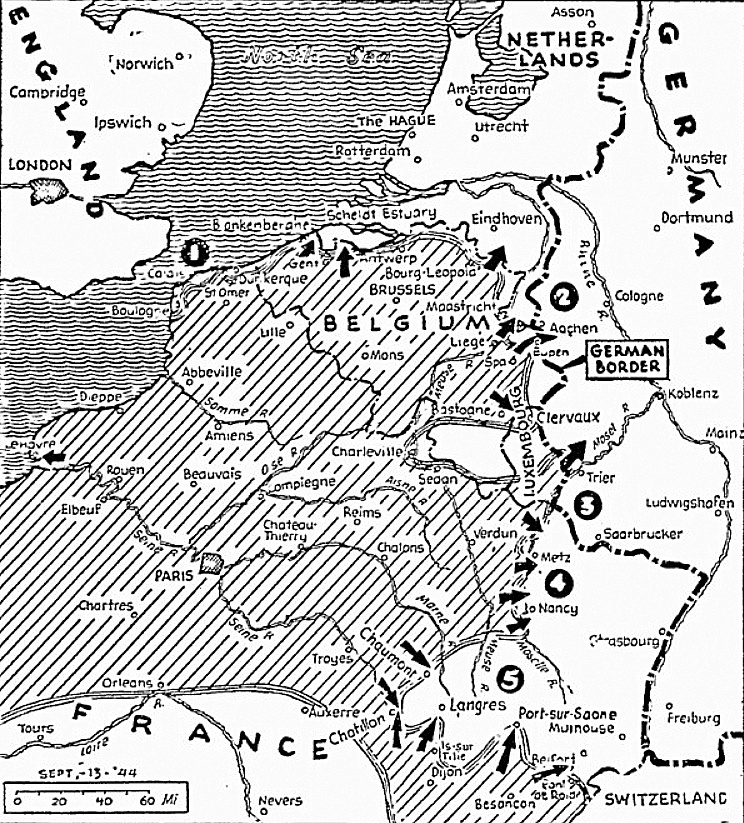Note by the Secretaries of CCS
Quebec, 13 September 1944
Top secret
CCS 675/1
A combined memorandum on troop movements, covering the period October 1944 to March 1945
The Representatives of United States and British military services in conjunction with appropriate shipping authorities submit the attached report of the examination of troop shipping requirements suggested by the Combined Chiefs of Staff in their 172nd Meeting of 12 September.
A. J. McFARLAND
A. T. CORNWALL-JONES
Combined Secretariat
[Enclosure]
Top secret
Combined memorandum on troop movements covering the period October 1944 to March 1945
Assumptions
The state of war in Europe is such that the Combined Chiefs of Staff agree:
a. That it is feasible to release British troops from Europe for Operation DRACULA.
b. No further U.S. troops need be transported to European theaters.
If the decision with regard to the two conditions in 1 above is not made by 1 October the necessary transfer of British forces to India cannot be accomplished in time to execute the operation before the monsoon.
Statement of the problem
The problem therefore is to determine the effect of employment of troop shipping for DRACULA on U.S. and British deployments subsequent to the defeat of Germany.
Facts bearing on the problem
The buildup of a British task force in India for DRACULA involves the movement of six British divisions or 370,000 personnel from Europe to India prior to 1 March 1945.
It is estimated that this movement will during its peak period involve virtually the entire British trooping lift.
This requirement will limit British assistance to the United States in the Atlantic to a trooplift of about 25,000 per month from November 1944 to April 1945 by leaving only the two Queens on this run. However, in the event of any unforeseen difficulties in meeting the DRACULA program it might prove necessary to withdraw one or both of the Queens from the Atlantic service.
A further effect will be the withdrawal of all British ocean-going troopships now employed in cross-Channel movements. This amounts to a capacity of 25-30,000 troop spaces for combined cross-Channel troop movements. It is estimated that British cross-Channel troop movements can be accomplished in other type vessels. The scale of U.S. cross-Channel troop movements cannot be determined but should be relatively light in proportion to total U.S. withdrawals from the Continent. To the extent required such movement must be accomplished in U.S. shipping.
The DRACULA movement of British troops absorbs the full capacity of Indian ports with the exception of such U.S. troops as can be received through the port of Calcutta. India has stated that they can disembark two “General” class ships off Calcutta simultaneously by the use of Indian Ocean shipping.
Discussion
- Effect on British movement up to approximately mid-March
a. After 30 September it will not be possible to carry out any normal trooping from the United Kingdom to theaters abroad other than any replacements included in the DRACULA program. Allowance has been made for 4,500 a month between Canada and the United Kingdom.
b. No non-operational movement can take place except those which might be capable of being effected in ships returning empty from operational voyages.
c. No troop ships could be spared for conversion to other tasks, viz: fleet train, hospital ships, etc.
d. It will only be possible to carry out movement already planned between theaters abroad, mainly reinforcements from West and East Africa to India and New Zealanders to Italy which are small in relation to the total fleet and for which shipping is being positioned. Internal movement in the Mediterranean will be reduced to a local lift of some 15,000.
- Effect on U.S. movements up to approximately end of March
a. U.S. shipping schedules for redeployment have included the movement of 70,000 U.S. troops per month from Europe to the United States in British ships. Under this assumption the strength of U.S. forces in Europe will be:
| 1 Oct 44 | 2,760,000 |
| 1 Apr 45 | 1,535,000 |
| 6 months withdrawals from Europe | 1,225,000 |
b. The reduction of British assistance in the Atlantic to 25,000 troops monthly would result in the following European position:
| 1 Oct 44 | 2,760,000 |
| 1 Apr 45 | 1,805,000 |
| 6 months withdrawals from Europe | 955,000 |
In other words a reduction in the rate of return of U.S. troops from the European Theater will be required amounting to 270,000 in six months.
c. Troop movements to Pacific theaters in accordance with redeployment plans tentatively set up, but now under review, would be possible.
Conclusion
Until the strategic requirements for the furtherance of the war against Japan subsequent to the defeat of Germany have been determined and until shipping priorities have been established as between operational and non-operational moves, it is not possible to present more detailed shipping implications during and after the period 1 October 1944 to 1 April 1945.


